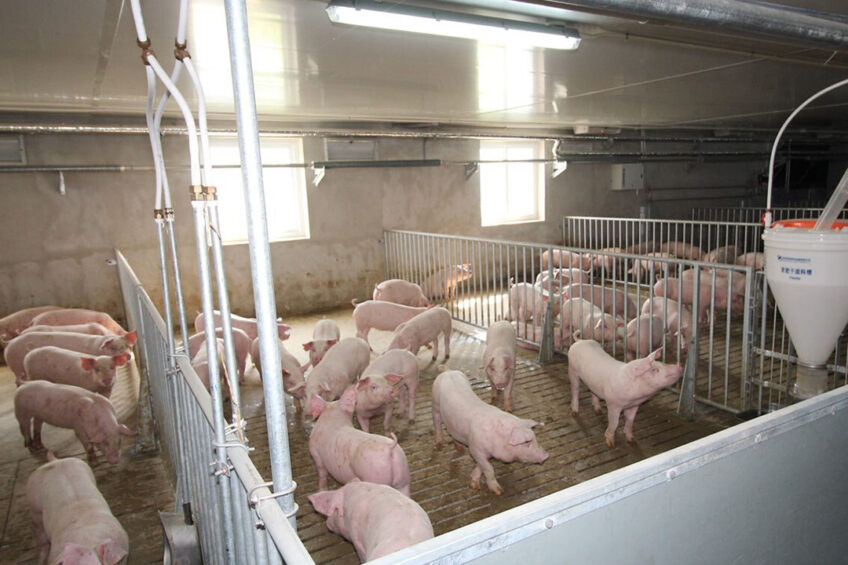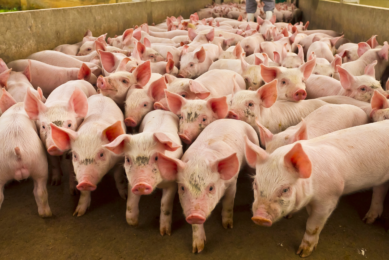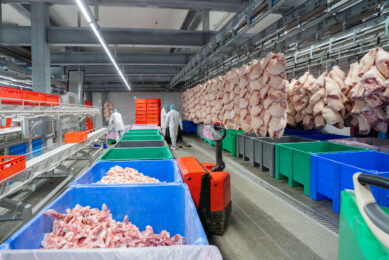Rabobank: Chinese volatility determines global pork market

Unstable developments in China prove to be the most determining factor to analyse the global pig and pork meat markets. In the most recent quarterly update by Rabobank, it is said that hog prices will rebound, and pork imports will slow down too.
Great volatility in Chinese hog and pork prices have been rippling through the global market in recent months, Rabobank wrote in a press release announcing the latest quarterly update. These are written by a team of the bank’s strategic market experts. China’s slaughter rates were unexpectedly high in the 2nd quarter of 2021, wrote Rabobank, “pushing pork production up 35.9% year-on-year in the 1st half of the year, according to official data.”
The bank continued to write: “The sudden supply increase resulted in a sharp price decline and negative results in both farming and trading in the 1st half of 2021, pointing to low pork imports into China in the 3rd quarter.”
Downward pressure due to frozen pork inventory
While Rabobank expects hog and pork prices to rebound in the 3rd quarter, the estimated high frozen pork inventory will impose a lot of downward pressure on prices. The bank expects that a slowdown of imports in the coming months will reduce full year imports from 2020’s record levels by 10% to 20%. That will lead to a redistribution of pork trade in the global market and could place downward pressure on pork prices in exporting regions.
One by one, the bank explained its projections for the next few months for the various areas in the world.
Pork markets in China
China’s pork production showed strong growth in the 1st half of 2021, due to liquidation and oversized hogs, Rabobank wrote. African Swine Fever continues to spread, the bank said, causing ongoing liquidation in specific regions. “Demand growth lags behind supply growth, reflected by the sharp fall in prices. Restocking has slowed, as farmers suffered sizable losses.”
Due to the liquidation of sows in the 1st half, Rabobank expects slaughter in the 3rd quarter to slow down and prices to rise. However, the high frozen pork inventory will limit price movements, the bank concluded.
Pork markets in Europe
Europe registered strong production growth of 5% year-on-year in the first 4 months of 2021, due to a backlog in slaughter at the end of 2020 and higher slaughter weights. However, high feed costs and softening exports will limit production growth in the 3rd quarter, the bank expects.
Exports to China were down slightly in April, offset by strong shipments to Vietnam and the Philippines. The bank points to Germany, adding that new ASF outbreaks in German domestic pig farms add new risks.
Pork markets in the United States
After reaching record highs in mid-June, hog prices are lower, stabilising on strong demand and lower production, the bank reported. Disease loss, lighter slaughter weights, and high feed costs will moderate production in the 2nd half of 2021.’
Pork prices remain well ahead of expectations on strong belly and ham demand, the bank wrote. “Exports declined slightly through May, with weaker sales to China outweighing increases to Mexico, Canada and Japan.”
Pork markets in Brazil
Rabobank wrote that pork production started the year at a good pace, due to the positive results in 2020, mainly in exports. However, high feed costs will discourage further production growth in the coming months in some regions, the bank added.
In terms of demand, the a-typical increase in beef prices in the 1st months of 2021 following dry climatic conditions has favoured the consumption of chicken and pork.












